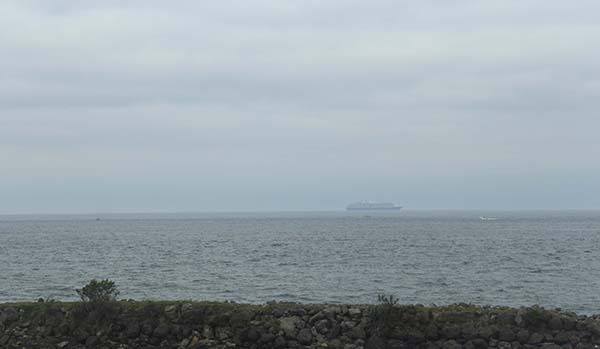Clallam Bay, sweet, quiet, Clallam Bay. Who would ever want to hurt a hair on the head of the little community of Clallam Bay? Well, Canada, that’s who … well actually, it was all a big misunderstanding. That was Canada’s story and Clallam Bay, being the nice community it was/is, was pretty understanding.
This is the story of the day Canada attacked Clallam Bay.
Shells burst over the Olympic Peninsula village of Clallam Bay on Monday, Jan. 29, 1962, and the Navy said they apparently were fired by Canadian Navy ships practicing anti-aircraft gunnery.
A spokesman for the 13th Naval District headquarters in Seattle at the time, said the shelling stopped when the Canadian flag officer for the Pacific, at Esquimault, B.C., issued a cease-fire order.
First report
The first report of the shelling came to the Navy from the Coast Guard at Port Angeles. C. Willis Miller, in charge of the lighthouse at Slip Point, near Clallam Bay, said a shell fragment ripped some shingles on the roof of one house and one lit behind the school.
“People are pretty mad,” he said. “The shells landed right in Clallam Bay.”
Saw shells
Many residents of the area saw the shells land, but there were no reports that anyone was hurt.
Austin V. Glidden, deputy sheriff at Clallam Bay, said he understood the shells came from a gunboat as it engaged in practice against a target towed by a plane.
Glidden said shrapnel showered the town for 15 to 20 minutes and most of the shells exploded in the air but at least three “duds” fell.
School-yard
He said the shell fragment which landed in the school yard weighed more than a pound. The piece plummeted to Earth five minutes before school was dismissed for the day. The deputy said the house struck by a fragment was that of Mr. and Mrs. Ray Gossom. He said their daughter, Mrs. John Brow, was inside when the chunk of metal, which weighed about five pounds, ripped the roof.
Residents warned
Residents of the village were warned to leave “duds” alone.
The Rev. Thompson, of the Clallam Bay Presbyterian Church, was at the school to discuss Boy Scout activities with Principal Charles N. McLean about 3:20 p.m. He said there were some ships on the strait at the time engaged in anti-aircraft practice and a target plane went over the town flying into the sun just before the shells fell.
While Thompson was in the principal’s office, one of the pupils, Gary Fernandes, came in with a two- or three-pound shell fragment. The boy took Thompson and McLean to the spot where he said the fragment fell, about 100 yards south of the school!
There didn’t appear to be any panic in the town at the time. People were aware the fragments were passing over the town and described them “as sounding like helicopters coming in to land.” They were more “peeved and mad” than scared.
A red-faced Canadian Navy promised a 70 year-old Clallam Bay widow never to bounce another shell off her house.
Representatives of Her Majesty’s Canadian fleet gave the assurance to Mrs. Louise Gossom on Tuesday, Jan. 31, when they visited the little logging and fishing community to see what damage had been done by the accidental shelling.
Shells from the destroyer escort, HMCS Skeena, burst over the town as the ship was firing at a plane towed target offshore. Canadian officers said they were in no position to say how the three-inch, twin-mounted guns happened to be pointed toward the town.
“I was under a tree in the garden,” said Mrs. Gossom. “I didn’t know what was happening — I thought they were shooting out on the street.”
Suddenly a shell, about six inches long, careened off the roof of her house. The frightened widow took cover until the shelling ceased, then ventured outside for a look at her roof.
No damage
“It didn’t do any damage; it took off three shingles, that’s all,” she said.”Was I upset!” she exclaimed. “I didn’t sleep all night — I’m sick.”
“They promised they wouldn’t do it again. That’s all I care — that they don’t do it any more.”
While disturbed, most of the town’s residents regarded the incident as “just one of those things.”
Greatest concern was over the fact that several shells burst over the grounds of the community’s school while classes were to be dismissed. One piece of shell fell near a boy who was just returning home.
The statement the Canadian Navy said:
“An analysis of the records of the gunnery practice carried out in the Strait of Juan de Fuca by four RCN ships indicates the Skeena’s anti-aircraft guns, trained on a target towed by a jet aircraft, opened fire a moment too soon and fragments of the first shells of the burst reached the shoreline.


